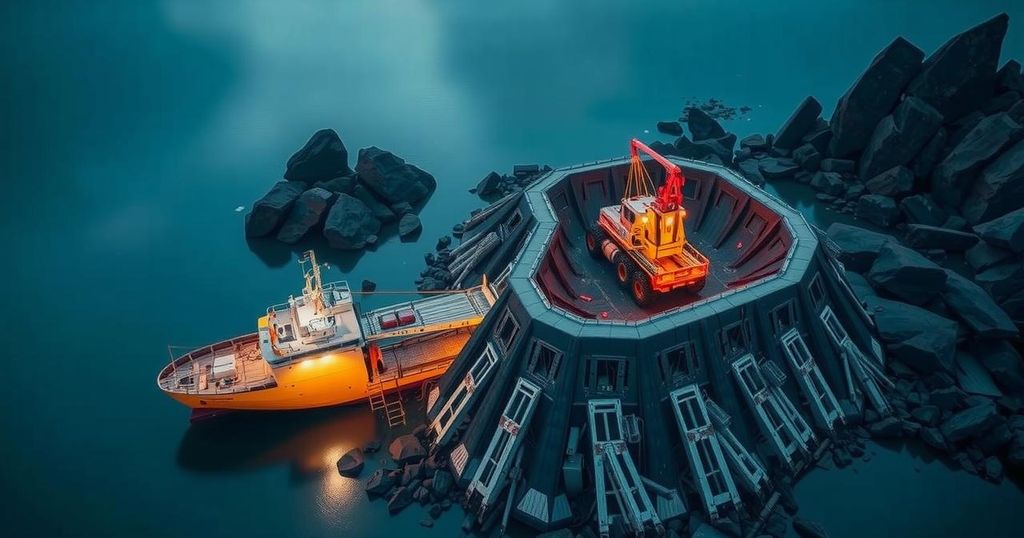China Expands Mining Influence in the Democratic Republic of Congo

Chinese investments in the Democratic Republic of Congo (DRC) are transforming the mining sector, particularly in copper and cobalt production. With over 70% control of output, Chinese companies like CMOC are driving growth despite challenges such as corruption and poor infrastructure. The DRC government is pursuing industrialization, aiming to shift from raw mineral exports to establishing a foothold in global supply chains, particularly for electric vehicles and batteries.
In the Democratic Republic of Congo (DRC), significant mining activities are notably centered in the Katanga Plateau, which houses the Tenke Fungurume Mining (TFM) site, the world’s largest copper mine. Operated by the Chinese metals corporation CMOC Group Ltd. alongside local state-owned enterprise Gecamines, TFM is pivotal to the DRC’s role in the global commodities market. CMOC solidified its 80% stake in TFM following complex negotiations with the DRC government, which included an $800 million equity transfer commitment over six years. This situation highlights the challenging dynamics of mining operations in the DRC, where resources are abundant but marred by infrastructural issues and corruption.
China currently dominates over 70% of the DRC’s copper production, with investments surpassing $20 billion. The demand for copper and cobalt, essential for technologies such as electric vehicles and renewable energy systems, has surged, with copper prices reaching $11,100 per ton in early 2024. CMOC’s strategic partnership with major commodity players aims to ensure the DRC leverages its mineral wealth effectively, considering that the DRC is home to a substantial portion of the world’s copper and cobalt reserves, in grades that exceed those found in China.
The DRC government is keen to transform its dependency on raw mineral exports into participation in global manufacturing and battery supply chains. To attract foreign investment, DRC’s Minister of Mines announced initiatives aimed at improving infrastructure, enhancing regulatory frameworks, and combating corruption. The nation’s ambition is further accentuated by global scrutiny and competition from Western powers striving to reclaim influence in Africa amid geopolitical tensions.
The evolution of the mining sector in the DRC underscores challenges such as power shortages, poor roads, and a lack of skilled labor that hinder industrialization. However, Chinese companies continue to innovate within these constraints. Notably, they have adopted cost-effective strategies that have enabled them to thrive where Western firms have struggled. The reliance on low-grade ores has been balanced by employing advanced processing techniques, pushing their production efficiencies higher.
Looking ahead, the DRC’s vision of transforming into a powerhouse in the value chain remains fraught with uncertainties influenced by both local and international factors, necessitating robust governance and infrastructure development to fulfill its potential as a critical supplier to the clean energy transition globally.
The political and economic landscape of the Democratic Republic of Congo (DRC) presents unique advantages and complications, especially in the mining sector. Known for its vast mineral wealth, the DRC contains over 15% of the world’s copper deposits and more than half of its cobalt reserves. While the global demand for these minerals is increasing, challenges such as corruption, inadequate infrastructure, and a lack of skilled labor limit the country’s ability to maximize its advantages effectively. The DRC’s renewed focus on attracting investment, especially from China, reflects a critical turning point in its economic strategy to develop beyond merely exporting raw materials to becoming part of global supply chains, particularly in electric vehicle technology and energy transitions.
In conclusion, the DRC’s mining sector is at a crossroads, driven by both its rich natural resources and significant external investment, particularly from Chinese companies. While challenges persist, such as power shortages and infrastructural deficits, the DRC’s government demonstrates a commitment to overcoming these obstacles and transitioning from a resource-dependent economy to an industrialized one. The interplay of global geopolitical interests, particularly with regard to critical minerals, adds another layer of complexity to the future trajectory of the DRC’s mining operations and its role in the global economy.
Original Source: www.thinkchina.sg








